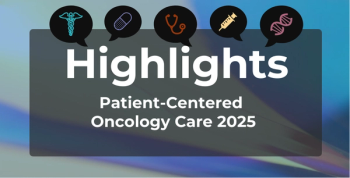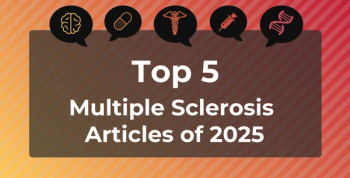
Stalking Associated With Higher Risk of CVD in Women
Key Takeaways
- Women experiencing stalking or obtaining restraining orders face significantly higher CVD risk, with a 41% and 70% increase, respectively.
- Psychological distress from stalking and legal actions may contribute to the development of CVD in affected women.
Women who experienced stalking or intimate partner violence were 40% more likely to self-diagnose an adverse cardiovascular event compared with women who did not.
Women who have experienced stalking by a current or former spouse or partner or an acquaintance and filed for a restraining order in response had a significantly higher risk of developing
One in 3 women experience stalking in their lifetime, making it one of the most common forms of interpersonal violence.1 Described as a crime of power and control through repeated acts of harassment or threatening tactics to instill fear or safety concerns, psychological symptoms associated with women who experience stalking—such as anxiety and depression2—can contribute to the development of cardiovascular disease (CVD). While previous research has observed associations between experiencing violence and adverse health outcomes like hypertension and heart disease, there is little research addressing the association between stalking and CVD. Additionally, restraining orders—"a legal means of protection from violence that aims to limit the contact between a victim and perpetrator that can be issued to protect women from stalking, harassment, and IPV"—were also found to be associated with poorer health and negative health consequences for the women who request them. 1
This study used data from the Nurses’ Health Study II cohort, which included 116,429 participants aged 25 to 42 in 1989. The follow-up substudy conducted in 2001 sent a questionnaire to 91,297 of the participants from the initial study. The questionnaire asked about participants' history of whether they had been stalked or had obtained a restraining order. Only 68,376 women responded and returned the questionnaire. After excluding women with missing covariate data, such as race and ethnicity, the sample size used in this analysis was 66,270 women; the majority of women in this cohort were non-Hispanic White (n = 61,822 [93.3%]).
Of them, 7721 (11.7%) reported experiences of stalking, and 3686 (5.6%) reported obtaining a restraining order. The number of women who experienced stalking was further reduced by the secondary measure of stalking established by the National Violence Against Women Survey (NVAWS), which defined stalking as experiencing more than 1 occasion of reported stalking harassment behavior, followed by one or more instances of experiencing said behavior and reporting feeling very frightened or fear of bodily harm to them or a loved one as a result of these behaviors.
After adjusting for the “narrow” definition provided by the NVAWS, only 4710 (10.3%) of women were classified as having been stalked. Of the women who reported being stalked, 5500 (71.2%) reported intimate partner violence (IPV), and of those that met the narrow definition by the NVAWS, 2448 (52.0%) reported that at least one of the contributing harassment behaviors was committed by a current or former spouse. Furthermore, researchers found that of women who reported having a restraining order, 3127 (84.8%) reported that it was against a spouse or significant other, 595 (16.1%) reported that it was against a non-partner, and 36 (1.0%) reported restraining orders against both.
Regarding CVD, 1879 (2.8%) women self-reported developing CVD, and it was found that compared with women who did not report a history of stalking, those who did had a 41% increased risk of self-reported CVD incident (HR, 1.41 [95% CI, 1.24–1.60]). Women who reported obtaining a restraining order showed a 70% increased risk of self-reported incidents of CVD (model 2 HR, 1.70 [95% CI, 1.44–1.98]). Furthermore, women who reported both a history of being stalked and obtaining a restraining order showed the highest risk of CVD compared with women who reported neither exposure (e.g., model 2 HR, 2.16 [95% CI, 1.77–2.62]).
“The often-arduous nature of obtaining a restraining order on top of the violence itself may equate to a substantial period during which women may feel a lack of control over their lives and fear for their safety,” the study authors explained. “Psychological distress likely lies on the pathway between experiences of stalking or having obtained a restraining order and CVD, with previous work documenting an increased likelihood of distress with violence, including stalking, as well as associations between distress and CVD.”
The study limitations included the self-reported measures of violence and the self-reported CVD. However, adjudicated CVD verified by medical records showed that the reports were not heavily biased, as the findings were similar when comparing the self-reported CVD to adjudicated CVD as an outcome.
“Overall, our findings highlight the urgent need to consider violence against women, a prevalent yet underexplored risk factor for CVD, in understanding women’s health and orienting priorities for public health interventions,” the study authors suggested.
References
1. Lawn RB, Murchland AR, Thurston RC, et al. Experiences of stalking and obtaining a restraining order are associated with onset of cardiovascular events in women: a prospective analysis in the Nurses’ Health Study II. Circulation. 2025;152:00-00. doi:10.1161/CIRCULATIONAHA.124.073592
2. Information on stalking victims. National Institute of Justice. October 25, 2007. Accessed August 11, 2025.
Newsletter
Stay ahead of policy, cost, and value—subscribe to AJMC for expert insights at the intersection of clinical care and health economics.







































